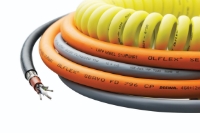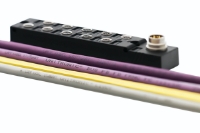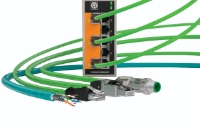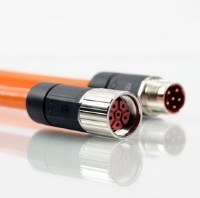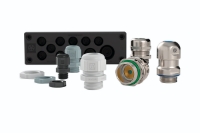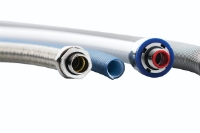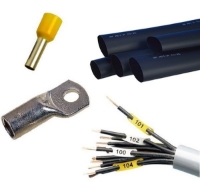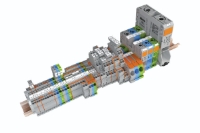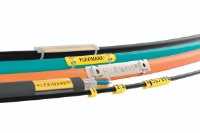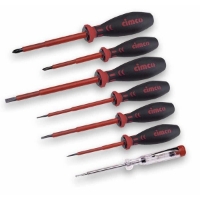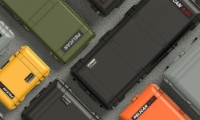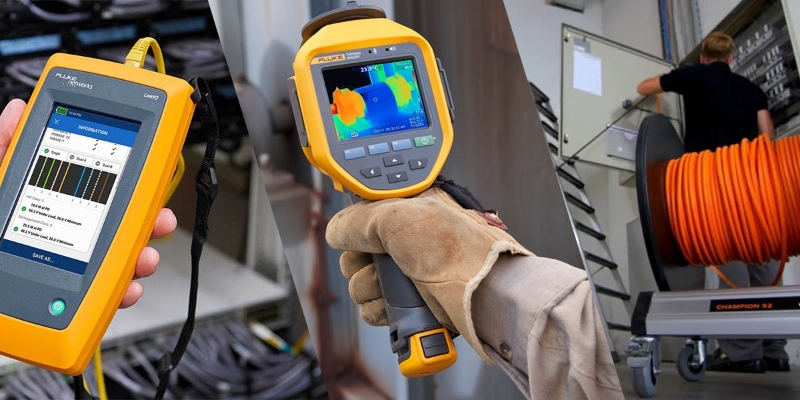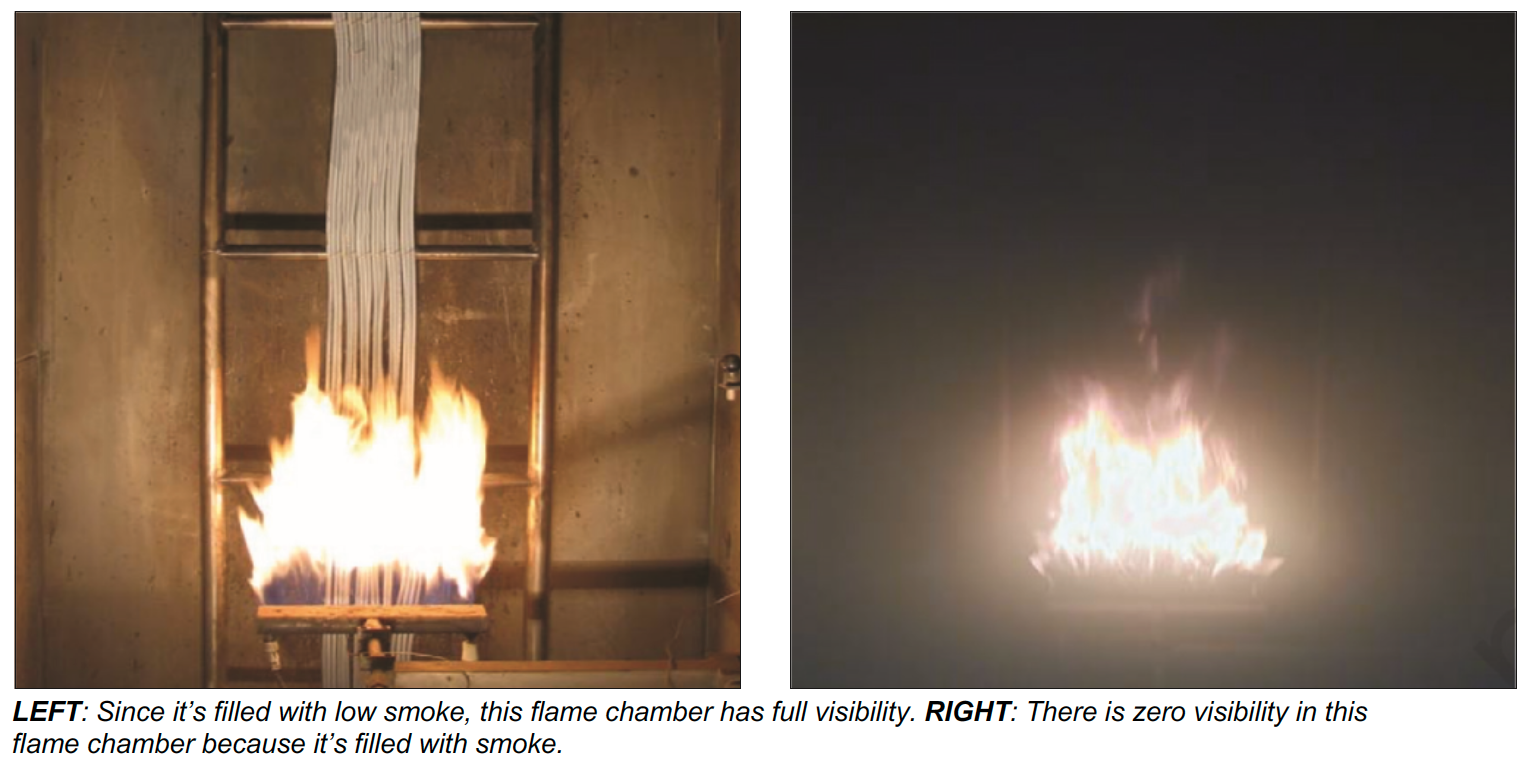Scott Ziegler, Product Manager, LAPP Group, offers the insights of a world authority cabling and connectivity solutions company to clear up clouds of confusion about where industrial infrastructure automation, resources, food and beverage processing, telecommunications, computer and electronics companies should choose low-smoke, halogen-free cabling to protect life, technology and vital private and public infrastructure.
Halogen-free wires and cables
Have been widely used in Europe for some time, they’re now starting to gain relevance further afield in places such as the United States and Australia. Products containing halogen – such as wires and cables, conduits, routing ducts and more – are receiving attention domestically due to the negative effects they impose on both industrial workers and machinery. And the push to reduce halogen usage is now reflected in UL and other domestic safety standards.
In the event of a fire, halogenated wires and cables give off toxic fumes that can cause serious health concerns if inhaled, not to mention they also destroy expensive electronic equipment.
As industrial companies become more conscious of these problems, they’ve begun taking a closer look at the benefits of halogen-free cables.
Here’s a guide to some places where it makes sense to use halogen-free cables, and why you might want to consider them over halogenated cables in many applications.
Safety first with halogen-free cables
Halogen-free wires and cables are used in various petrochemical, transportation, utility, electronic and semiconductor applications. Advocates of halogen-free cables fear that during a fire, air-handling distribution systems like heating and airconditioning ducts can act as circulating air conduits and transmit toxic fumes. Since halogen-free wires and cables don’t produce toxic corrosive gases in fires, they help minimize damage to electronic equipment and aren’t threatening to workers in surrounding areas.
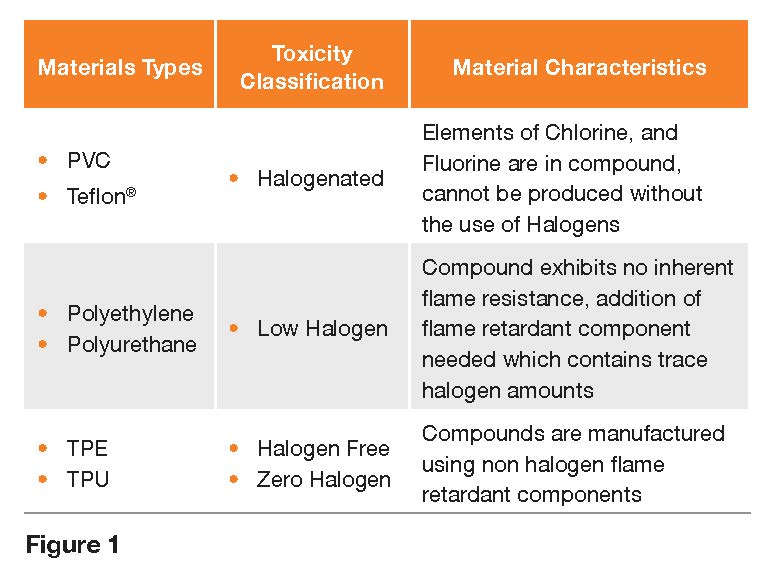
On the other hand, proponents of halogenated cables believe that there wouldn’t be any safety issue as long as the installed cables meet the required smoke and flame resistance requirements. Adding halogens to compounds gives wire and cable the ability to perform well during flame testing mandated by the NFPA (National Fire Protection Agency). Also, halogens provide a cost-effective, highly-efficient flame retardant component mechanism to compounds. However, keep in mind that while it sometimes makes sense to use halogenated cables, be aware that ingesting their fumes can be harmful to human life.
Hazardous fumes from halogenated elements. In the wire and cable industry, there are three main halogenated elements—fluorine, chlorine and bromine—which are found in various types of cable insulation and jacketing compounds (see Figure 1). Fluorine is present in varying amounts of certain high temperature compounds, such as Fluorinated Ethylene Propylene (FEP Teflon®) and Polyvinylidene Fluoride (Kynar). Chlorine is a component part of Polyvinyl Chloride (PVC). And bromine is often used as part of the flame retardant package used in thermoplastic cable insulating compounds.
In addition to the carbon monoxide they release while burning, these three material categories also release additional toxic gases that are dangerous for humans to ingest. Carbon monoxide itself can be lethal. But if you add either hydrofluoric or hydrochloric acid to these fumes, you get an even more dangerous combination. Irreversible damages can also hurt your computer circuitry.
During a fire, components containing halogen wires and cables emit both smoke and toxic fumes which, when combined with moisture, become hazardous. Up to 80% of all deaths from fire come from inhaling toxic fumes and smoke (see Figure 2). These fumes are acid gases—such as hydrobromic, hydrochloric and hydrofluoric—that can cause severe damage to body parts. They’re also known to cause confusion and disorientation, which can prevent victims from finding safe escape routes. From the viewpoint of expensive electronic and electrical equipment, these corrosive fumes also attack and degrade sensitive components. The damage from these fumes can cause component malfunction and make the equipment inoperable.

Smoke testing
When looking at the differences between halogenated and halogen-free cables, another factor to consider is smoke, which can also cause fatalities and extensive damages to property and expensive electronic equipment. The UL 1685 smoke test performance chart shows the results of smoke release testing done per UL Standard 1685 during FT4 cable burns with different insulation and jacket combinations (seeFigure 3).

While the results in Type 2 show a significant improvement when compared to Type
1, the peak Type 3 indicate full compliance with these requirements. The resulting
data confirms that using a halogen-free insulation and jacket results in less smoke
release during a fire than a halogen insulated wire and cable.
Halogen components cost less
With all this in mind, there are still some times where halogenated components are the right choice. Using these components is a cheaper way to give thermoplastic cables the properties to guarantee performance characteristics of the insulating compound. Let’s take Polyvinyl chloride (PVC), for example. Containing chlorine and produced at a low cost, PVC provides the electrical, mechanical and physicalcharacteristics necessary to fulfill industry performance requirements. The source of chlorine in the PVC comes from two inexpensive commodities: water and salt. Since these raw materials are available in high abundance and achieve the desired properties, it’s not hard to understand why PVC is the primary insulation choice in today’s wire and cable industries. In short, PVC provides product performance required by UL, CSA and Interek at a much lower cost than halogenfree insulations and jackets.
Industry standards
A number of industry standards evaluate the cable fume toxicity produced during a fire. Each standard is unique because they approach the subject of determining cable fume toxicity through different evaluation parameters. They’re used to quantify smoke levels, light transmittance, levels of acid gas, concentration levels of toxic gases and halogen content.
While these standards are all different, and may vary in detail from local standards, they’re used to provide some determination concerning halogen-free or low smoke zero halogen cable requirements:
- IEC 60754-1: Details the amount of halogen acid gas measured from a specified amount of raw material. This test isn’t performed in the finished product wire or cable form, and compliance comes from not exceeding the mg/g that’s specified within the standard.
- IEC 60754-2: Shows the ph levels to determine the poisonousness of the gases during a fire. This standard approaches acidic levels that arise when halogenated components are burned and react with the moisture in the air.
- IEC 61034-2: Concerns the amount of light you can transmit while testing to determine the smoke density generated during a fire. High numbers show the effectiveness that a lighted pathway creates in a smoke-filled area.
- NES 713 Part 3: Determines the toxicity index of materials through complete combustion methods and analysis of the emitted gases. Measured in PPM, the gases must follow the highest values indicated, while concentration levels shouldn’t exceed the amounts for the 14 specified gases.
- UL 1685: This standard involves both the flame spread and fire resistance of cables, as well as methods for measuring smoke release. It establishes some pass/fail criteria, especially in the areas of peak and total smoke release. Lower numbers are desirable here, signifying the amount of smoke released.
- MIL-DTL-24643: Approaches the cumulative total contents of halogens in a cable by using X-ray fluorescence to determine amounts, giving an overall amount of concentration of halogen levels in a cable. Levels shouldn’t exceed the critical point of 0.2% under this standard specification for shipboard use.
Toxic fumes cause fatalities and ruin equipment
The following three examples are times when corrosion and toxic fumes emitted by halogenated materials during a fire have attributed to human fatalities and the destruction of equipment:
- A subway station fire took place in 2003 in Daegu, South Korea with intense toxic fumes and heavy black smoke preventing firefighters from quickly rescuing the people who were trapped. Almost 200 people were killed at this event, and another 150 injured. While it was deemed that inadequate emergency equipment didn’t help lessen the disaster, the use of PVC cables in the trains and subway station didn’t help the situation either.
- In 1996, a fire at the Dusseldorf Airport in Germany led to 17 deaths and 72 injuries when toxic fumes rapidly spread from smouldered PVC-covered cables in a cable ventilation shaft, emitting cyanide, chloride, dioxin and carbon monoxide into the air.
- The Illinois Bell office in Hinsdale, IL experienced a fire in 1988 that remains the worst disaster in telecommunications history. Corrosion and toxic fumes caused equipment destruction and loss of human life. The recovery costs were estimated to be several million dollars, and about 35,000 Chicago customers were without service.
To summarise
Choosing between halogenated and halogen-free cables can be confusing. But just remember that if your application requires a high efficiency cable that performs well in NFPA flame testing, halogenated cables are a suitable choice. If you’re looking for a cable that’s safer for your workers and machinery, you’ll want to go with a halogenfree cable.

